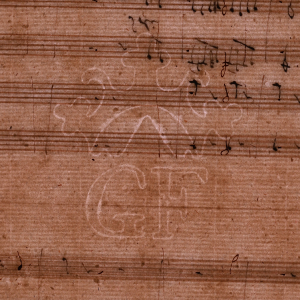A rastrum (pl. rastra) is a five-pointed writing implement used in music manuscripts to draw parallel staff lines (staves) across a blank sheet of paper. Rastrology, the study of the use of the rastrum and, more commonly, rastra (multiple or compound rastrum), is a branch of musicological studies that uses information about the characteristics of rastra to help find the date, provenance and other related information of manuscript music materials.
Four different kinds of information were collected: the orientation of the folios (upright/vertical or oblong/horizontal), the number of staves per page, the total span of the staves and the span of each individual staff.
The ID of a specific rastrology is, for example, given as UP_10_250-250.5_12.5-13 (the specimen is upright and contains 10 staves per page, with a total span of 250-250.5 millimetres and individual span of 12.5-13 millimetres). In the case of a horizontal orientation, a rastrology of 12 staves might be given as OB_12_186.5-187_9-9.5. Another example of a rastrology is UP_2x10_182-182.5_8-8.5 (the specimen has 20 staves drawn by the same 10-stave rastra, with a total span of 182-182.5 millimetres and individual span of 8-8.5 millimetres).
Rastrologies filters:
- Rastrology ID (researchable on all pages through the General Search on the left);
- Total span (or individual span) (researchable on all pages through the General Search on the left);
- Format (Oblong or upright) (researchable on the Rastrologies page, at the top);
- Date interval (10 years) (researchable on the Rastrologies page, at the top);
- Number of staves (researchable on the Rastrologies page, at the top);
- Any combination of 3. to 5..


